General Information
| TYPE OF PROJECT | SEMI-RURAL SCHOOL SANITATION PILOT AND DEMONSTRATION PROJECT |
|---|---|
| Project Period | November 2022 to December 2022, with continuous monitoring through 2023 |
| Project Scale | Provide proper sanitation for at least 1400 students at Ikinu Primary School. |
| Total Investment | USD 38,000 (12 new toilet cubicles connected to a biogas system to be utilized in a school feeding program and rehabilitation of the existing pit latrines to an improved water-based state) |
| address of the project location | Ikinu Primary School, Githunguri in Kiambu County, Kenya |
| Planning organization | Toilets for All, Mobile Alert Toilets, and Sanevi |
| Executing organization | Mobile Alert Toilets, Sanevi, Sistema.bio, Aljuli Engineering Ltd., and Varet Products |
| Supporting Organization | Toilets for All Foundation, Urimat |
B. Objective of the Project
The school circular sanitation project had the following objectives:
- to improve the learning conditions of the learners through improved sanitation facilities accompanied by hygiene education. This involved the construction of 10 new toilet cubicles to supplement and ease the pressure on the existing ones; the rehabilitation of the existing ones to better toilets; and the provision of 15 handwashing stations. The sanitation facilities had a focus on the reuse of human excreta as a resource in biogas production, which was required to support the school feeding program. To that end, the facilities were connected to two biogas reactors.
- to engage a wider audience comprising the surrounding communities to support, stimulate, and create demand for such resource-oriented sanitation systems with long-term cost-benefits to the school.
- to engage the children as effective agents of change. Children pass on their knowledge of better hygiene practices and improved facilities from school to their parents and thus influence communities.
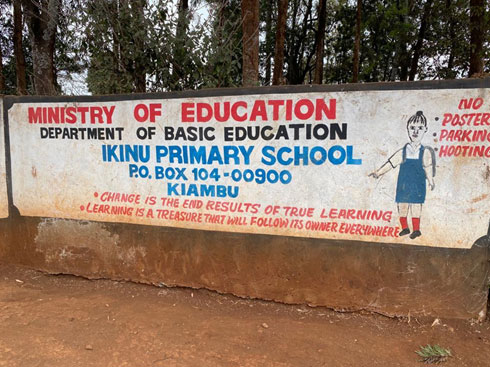
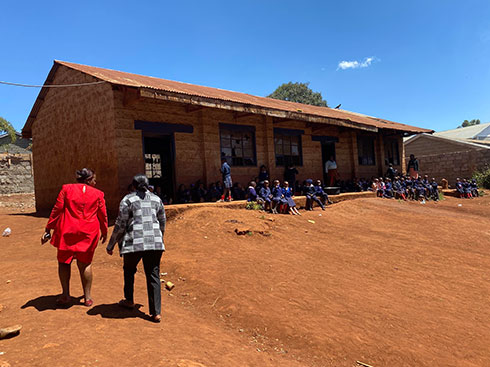
The majority of Kenyan schools either totally lack or have dilapidated sanitation and hand-washing facilities. Schools are often unable to provide a healthy environment, mostly due to a lack of political motivation and attention to sanitation and hygiene.
This generally leads to:
- inappropriate, poorly managed, and insufficient sanitation facilities for children in schools (particularly children with physical disabilities and children below 8 years).
- Lack of financial resources for cleaning and maintenance of school sanitation facilities
- Lack of proper hand washing facilities (including water and soap) and anal cleansing material (such as toilet paper or water)
- Poor enforcement of school sanitation facilities’ hygiene regulations and guidelines.
Insufficient or non-existent budgets or financing for the construction of new sanitation facilities or for the operation and maintenance of existing ones
C. Contextual Information
Ikinu Primary School is a mixed school with a student population of 1400 learners located in Githunguri, a semi-rural town in Kiambu County, Kenya. The main occupations in the area are small-scale trades and agriculture.
The school currently has a set of three pit latrines with 34 doors: 16 for girls, 10 for boys, 6 for children under 3, and 2 urinals for boys. The school faced a multitude of challenges, including insufficient toilets to cater for the growing number of students, the absence of hand washing facilities, damaged doors and roofs, and the absence of menstrual hygiene management facilities and education. Disposal of fecal sludge was also time-consuming and costly, and the school was solely dependent on firewood to prepare porridge for students, which causes deforestation, carbon emissions, and adverse health effects from smoke inhalation. Over time, the strain and pressure have taken their toll on the toilets, making them unsafe and undignified.

D. Project Description
The project’s rationale was to construct an additional 10-cubicle girls’ latrine for the school to reduce pressure on the existing facilities and allow learners to spend the least amount of time at the toilets to allow a timely return to class.
A total of 28 latrine cubicles (16 girls’ and 12 boys’) and 2 boys’ urinals were fully renovated. The renovations included converting current slabs to pour flush, new roofs, doors, and handwashing areas. The boys’ urinals were upgraded with 10 urinal pots from Urimat. Biogas reactors from Sistema.bio were also installed, allowing the anaerobic reaction of waste to generate biogas for cooking. The nutrient-rich effluent resulting from the reactors can also be used for farming by the school. To prevent the latrines from being clogged with menstrual waste, a medium-sized incinerator was also constructed to deal with the disposal of menstrual waste in the school.
The focus of the sanitation facilities was to use the excreta in the production of biogas to support the existing school feeding program. A complete biogas system (4 reactors and post-treatment works) was included in the civil works of this project, directly linked to the sanitation facilities.
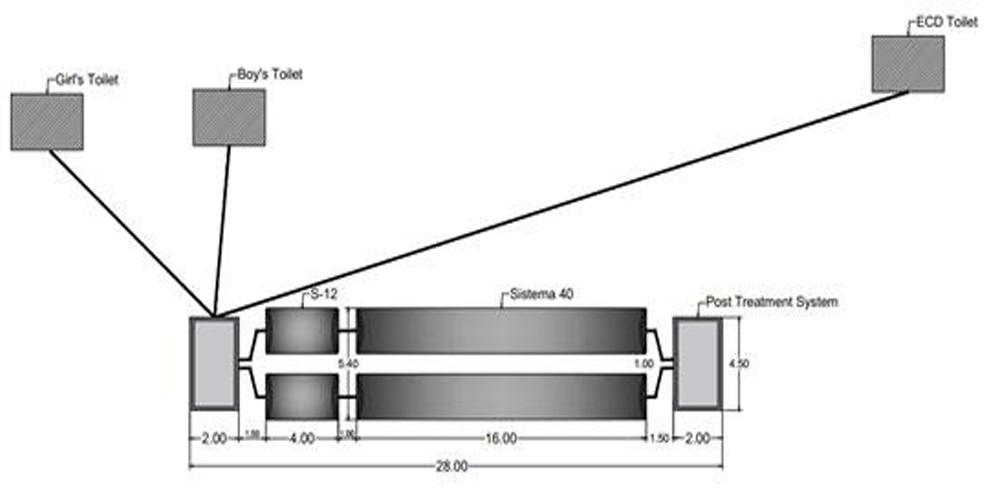
The toilets built under this program mainly served as an entry point for promotion and creating awareness. To this end, 12 handwashing points with water-saving faucets were provided to ensure the promotion of hygiene after toilet use. To provide balance, girls were instead allocated more toilet cubicles to use than boys. The school administration, the board of management (BOM), and the surrounding community were involved to ensure the success of the project objectives. These groups committed their efforts as well as fiscal and temporal resources to support project implementation.
E. Further Project Components
Training and establishment of the blue school
As observed in our previous school projects in Kenyan schools, hygiene education is practically nonexistent. All students, teachers, and parents at Ikunu Primary School were asked to participate in training with the objective of creating awareness for sustainable operations and maintenance of school toilets and linking sanitation, hygiene, and health.
Over 300 menstrual-aged girls received extensive training on menstrual hygiene management practices, with particular focus on the safe disposal of used menstrual products. Teachers and workers also received training on how to safely incinerate menstrual waste.
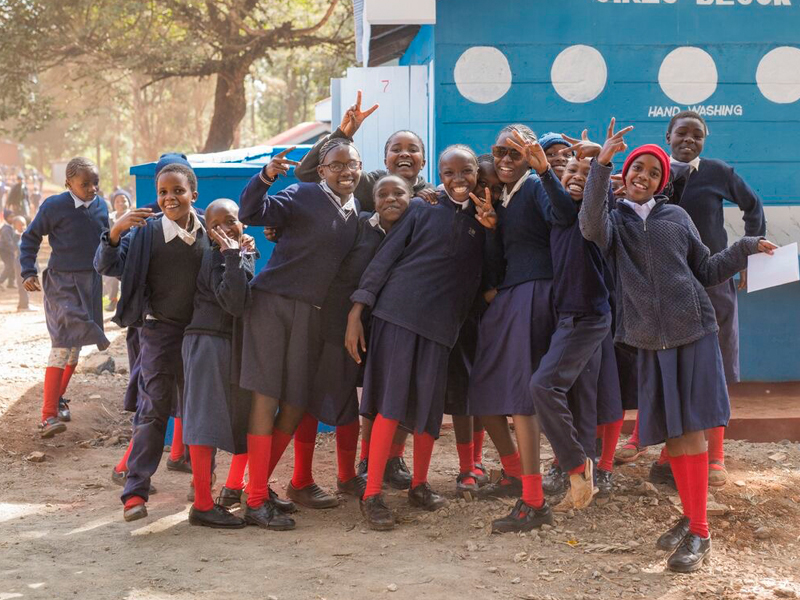
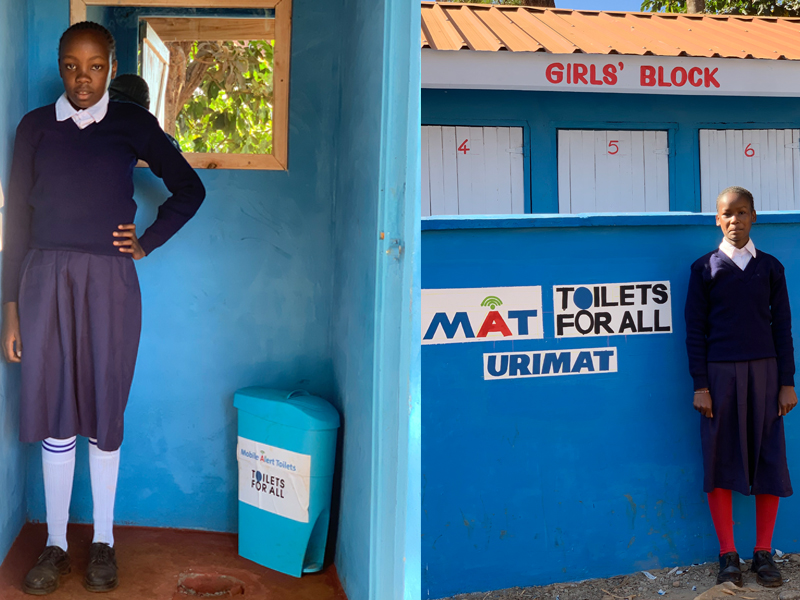

Additionally, learners were encouraged to form a “blue school” to promote improved sanitation practices through circular economy approaches. Training on MHM was also conducted for the girls’ population, including insights on proper disposal of the materials after use to prevent any cases of blockages in the new toilet system installed.
Costs and economics
The investment costs for the new 12 toilet cubicles were KES 1,000,000 (approximately CHF 10,000), as shown in the table below.
| ITEM CATEGORY | COST IN KES |
|---|---|
| 12 toilet cubicles | 980,000 |
| 4 biogas reactors | 811,342 |
| Renovations of existing latrines | 1,401,199 |
| 12 handwashing points | 50,000 |
| Painting job and branding | 165,000 |
| Incinerator construction | 450,000 |
| Administrative expenditure | 611,000 |
| Additional civil works | 119,000 |
Operation and maintenance
Currently, the school utilizes the biogas produced by the reactors to prepare two hot meals each day for 300 students, who pay a small fee for the food. This revenue assists with the system’s maintenance and operations. The school has plans to expand the school feeding program in the future.
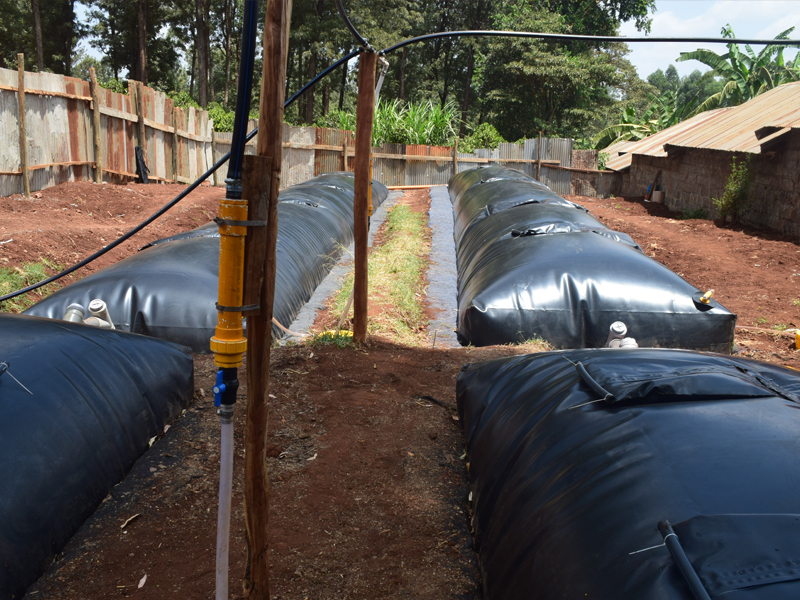
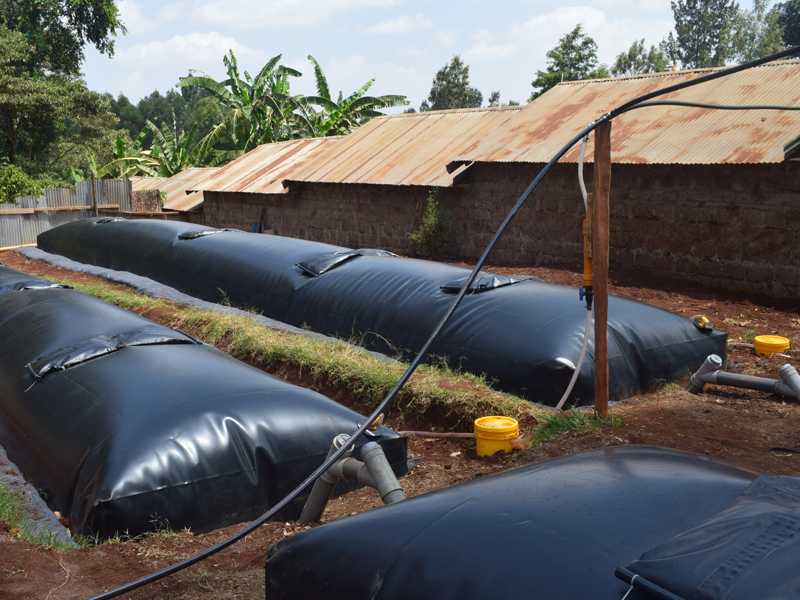
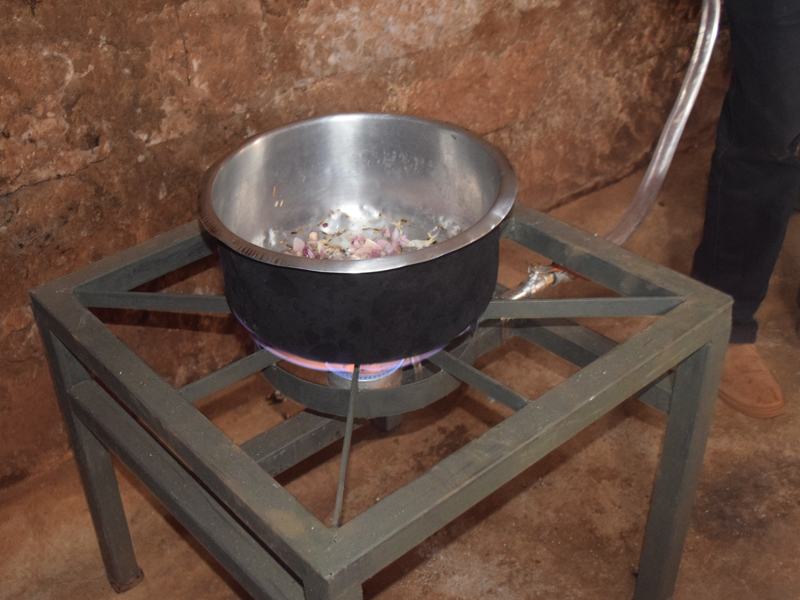
F. Lessons Learned
Through the school BOM, Ikinu Primary School made a commitment to cover operations and maintenance (O&M) costs for the facilities and the biogas system. Since the school is a public institution, the available private financing options, often in the form of debt, were not an option to complement any fiscal needs towards anticipated O&M. However, the BOM, through parents, committed to ensuring O&M would be taken care of adequately. The availability of cooking gas meant that the school cut costs on some of the previous kitchen expenses. These recouped costs were transferred to cover O&M requirements.
The major challenge in implementing sanitation facilities in schools is creating sustainable operation and maintenance systems within the schools. This strongly relates to the level of ownership. Since the participation and financial and material contributions of the schools and surrounding community were considerably high, ownership developed sufficiently. This is anticipated to promote the cleaning and management of the facilities.
The ratio of latrines to urinals in schools is an important consideration for promoting gender equity in sanitation. In sub-Saharan Africa and specifically in Kenya, there is a need to address gender disparities in accessing sanitation facilities. Providing equal access to latrines and urinals in schools can be very beneficial to students, particularly girls. According to the WHO and UNICEF, a general guideline for schools is to have a ratio of at least one toilet for every 25 girls and one for every 30 boys, with at least one separate, lockable, and gender-segregated toilet for menstrual hygiene management. This not only promotes gender equity but also leads to faster usage of the latrines, reducing cues, and ultimately improving academic performance. Addressing this issue is crucial for ensuring that all students have equal opportunities to succeed in school.
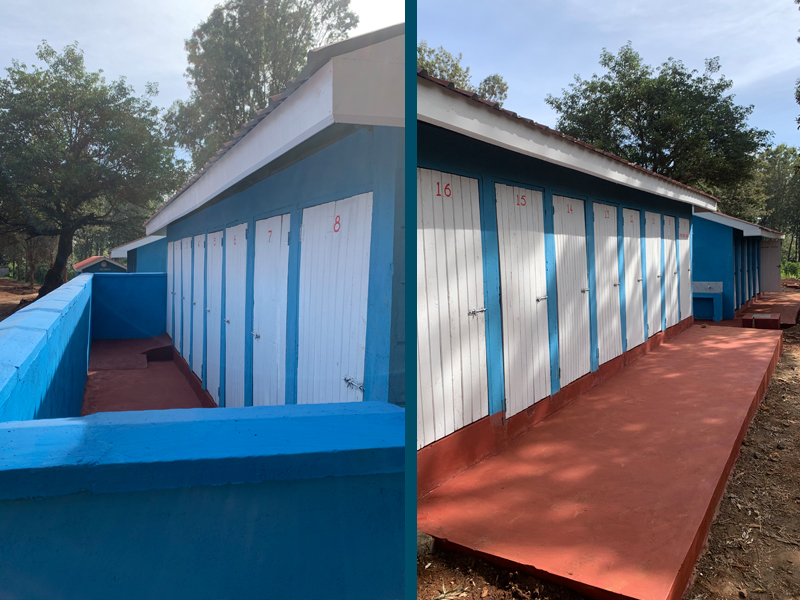
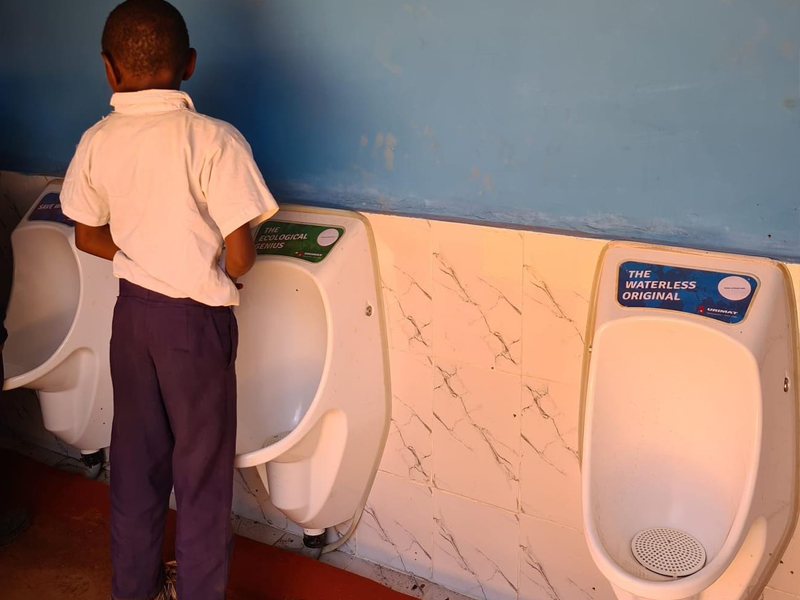
Lessons on the urinal-toilet ratio and our recommendations thereof
Our menstrual health management (MHM) training has revealed the critical factors required for promoting better menstrual health practices in schools. For instance, cultural sensitivity is a key factor as it acknowledges different beliefs and practices related to menstruation across various cultures. The training emphasizes the importance of practical skills, such as the correct usage and disposal of menstrual products, to enable interactive learning. Access to affordable menstrual products must be addressed as a significant barrier for many girls in schools. Lastly, we found that MHM training programs for government schools do not adequately empower girls, and training should aim to equip them with the knowledge and tools to manage their menstrual health effectively. By implementing these lessons, we can promote improved menstrual health and the overall well-being of women while protecting sanitation facilities in schools.
Cost-benefit lessons of resource-oriented systems in schools
Despite the significant upfront cost of installing resource-oriented systems like sanitation biogas in schools, such as in the case of Ikinu, schools can recoup their investments within a short time. Specifically, Ikinu School is expected to break even within approximately 11 years, while the system’s lifespan is 20–25 years. The onsite treatment provided by the biogas system is highly beneficial and cost-effective. Furthermore, the use of biogas as a renewable energy source can help schools reduce their reliance on non-renewable energy sources, lowering associated costs. Although the initial investment in the biogas system is high, the long-term benefits and cost savings can make it a worthwhile investment for schools seeking to improve sanitation and access to renewable energy sources.
